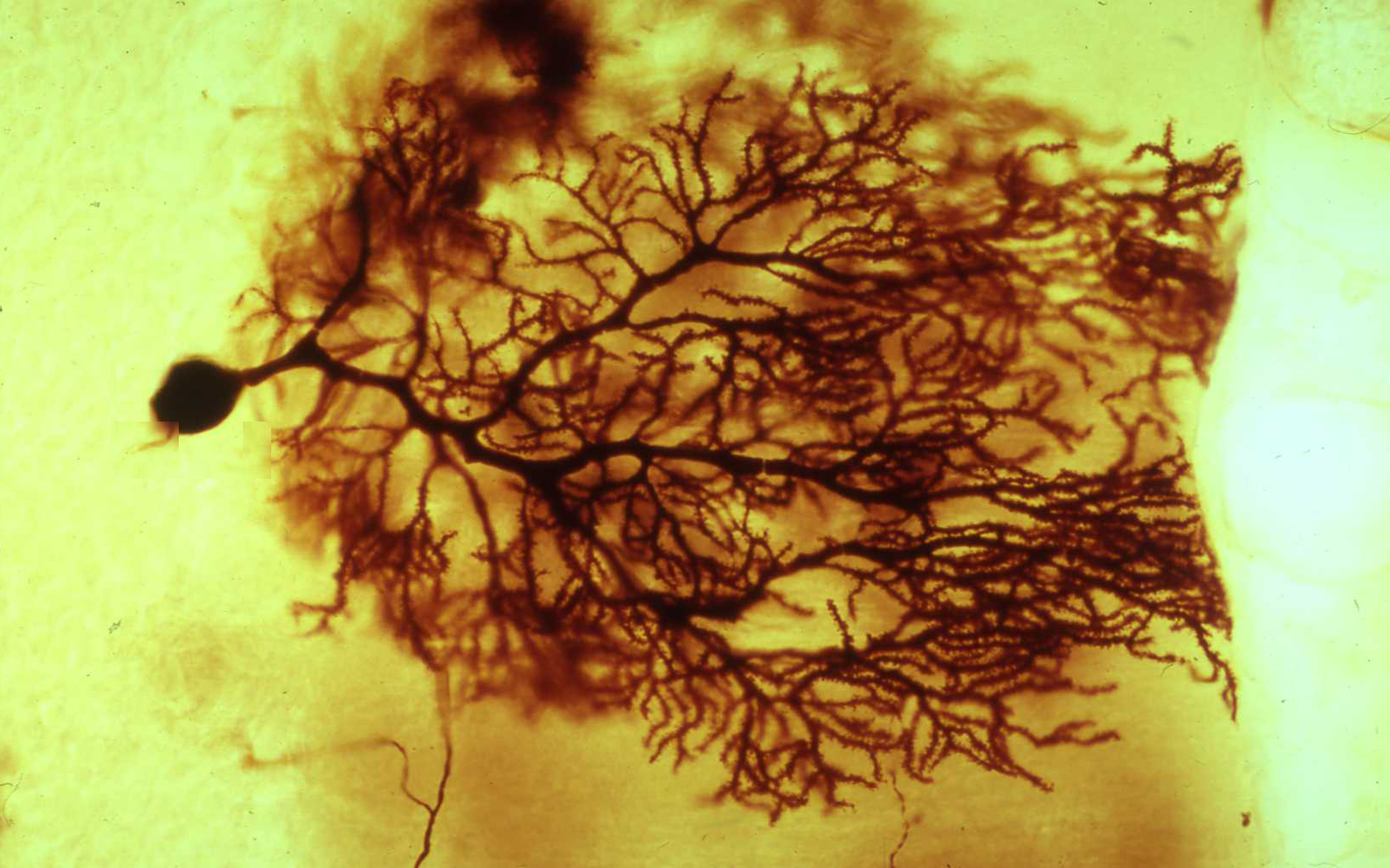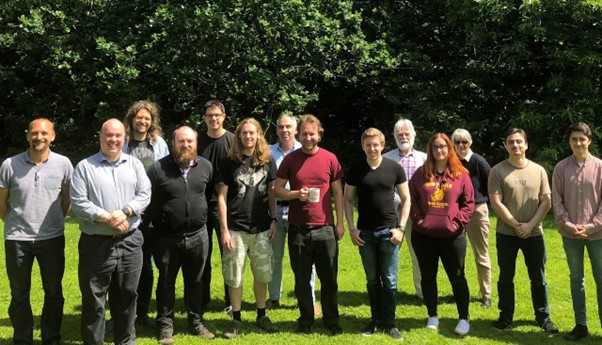Cognitive and Computational Neuroscience
Our interdisciplinary approach brings fresh insights into the mechanisms and neural subrates involved in cognition and perception.
Research Highlights
-
A team of interdisciplinary academics, led by Dr Ulrik Beierholm (Durham Psychology), are exploring Bayesian approaches to understand how the nervous system deals with uncertainty. Find out more here.
- Dr Lore Thaler (Durham Psychology) is working with human echolocators (people who can produce and use clicks to judge distance) to determine where the processing of this sensory input takes place in the brain. The collaborative team work with those that have pre-existing echolocation skills as well as those who are learning the skills for the first time. Find out more here.
-
A multidisciplinary team, led by Professor Marko Nardini (Durham Psychology) are investigating how novel sensory data, such as inputs from vibrating distance monitors or echo-based distance measurement systems, are combined with other, pre-existing sensory data. Systems such as these have potential applications in sports and leisure, as well as possible uses in workplace safety equipment. Find out more here.
Understanding Human Echolocation
Detecting Facial Recognition
Case Study: Forging New Collaborations
A Cross-Disciplinary Special Interest Group
A cross-departmental research group in Mathematical and Computational Biology was launched in 2018. This brought together researchers from across the Faculty of Science, and the guest speaker Professor Netta Cohen (University of Leeds) to share research through a series of discussions and talks. This continued with a pot-lockdown refresh in 2022.
For more information about the Mathematical and Computational Biology Special Interest Group please see the launch meeting report and email bsi.manager@durham.ac.uk to find out how to get involved.
Highlight Publications
Aston, S., Beierholm, U., & Nardini, M., 2022. Newly Learned Novel Cues to Location Are Combined With Familiar Cues but Not Always With Each Other. Journal of Experimental Psychology: Human Perception and Performance, 48, 6.
Aston, S., Negen, J., Nardini, M. & Beierholm, U., 2022 . Central tendency biases must be accounted for to consistently capture Bayesian cue combination in continuous response data. Behavior Research Methods, 54(1), pp. 508-521.
Aston, S., Pattie, C., Graham, R., Slater, H., Beierholm, U., & Nardini, M., 2022. Newly learned shape-color associations show signatures of reliability-weighted averaging without forced fusion or a memory color effect. Journal of vision, 22, 13.
English, E.A., & Chazot, P.L., 2022. Sports Post-Concussion Syndrome (PCS) Model in Drosophila melanogaster. Alzheimer's & dementia : the journal of the Alzheimer's Association, 17.
McPhetres, J., & Shtulman, A., 2021. Piloerection is not a reliable physiological correlate of awe
(2021) International Journal of Psychophysiology, 159.
Musa, A., Lane, A.R., & Ellison, A., 2022. The effects of induced optical blur on visual search performance and training. Quarterly Journal of Experimental Psychology, 75, 2.
Negen, J., Bird, L.-A., Slater, H., Thaler, L., & Nardini, M., 2023. Multisensory perception and decision-making with a new sensory skill. Journal of experimental psychology. Human perception and performance, 49, 5.
Norman L.J., Thaler L., 2023. The Occipital Place Area Is Recruited for Echo-Acoustically Guided Navigation in Blind Human Echolocators, Journal of Neuroscience, 43(24), 24.
Prew, W., Breckon, T., Bordewich, M., & Beierholm, U., 2022. Evaluating Gaussian Grasp Maps for Generative Grasping Models. Proceedings of the International Joint Conference on Neural Networks.
Scheller M., Nardini M., 2023. Correctly establishing evidence for cue combination via gains in sensory precision: Why the choice of comparator matters. Behavior Research Methods,10.3758/s13428-023-02227-w.
Thaler L., Castillo-Serrano J.G., Kish D., Norman L.J., 2024. Effects of type of emission and masking sound, and their spatial correspondence, on blind and sighted people's ability to echolocate. Neuropsychologia, 196.
.png)
People
Dr Ulrik Beierholm, Department of Psychology
Areas of Expertise: Computational Neuroscience
Research Interests: How the nervous system deals with uncertainty, whether in perception, decision making or learning.
Dr Vincent Croset, Department of Biosciences
Areas of Expertise: Neurobiology, (Single-cell) Transcriptomics, Behaviour
Research Interests: Effects of nutritional state and drugs of abuse on neuronal physiology, gene expression and behaviour.
Dr Paul Chazot, Department of Biosciences & Nevrargenics
Areas of Expertise: Neuroscience, Chronic Pain, Pharmacology
Research Interests: Identifying and validating novel drug targets and prodromal bio- and behavioural-markers for a range of common chronic neurological and metabolic pathologies.
Dr Alison Lane, Department of Psychology
Areas of Expertise: Clinical Neuropsychology
Research Interests
- Concussion / sub-concussive head impacts
- Neurorehabilitation
- Visuospatial attention
Dr Jonathon McPhetres, Department of Psychology
Areas of Expertise: Psychophysiology, Systems Biology
Research Interests: Using biological models to understand social behaviours and higher levels cognitions.
Professor Marko Nardini, Department of Psychology
Areas of Expertise: Visual and multisensory perception
Research Interests
- Perceptual and Cognitive development
- Perception with New Sensory Signals
Dr Lore Thaler, Department of Psychology
Areas of Expertise: Human Psychophysics, Psychoacoustics, Functional Magnetic Resonance Imaging (fMRI)
Research Interests
- Sensory neuroplasticity
- Blindness
- Human echolocation


/prod01/prodbucket01/media/durham-university/research-/research-institutes/biophysical-sciences-institute/biophysical-stock-images/83458.jpg)

/prod01/prodbucket01/media/durham-university/central-news-and-events-images/news/Echolocation-web.png)
/prod01/prodbucket01/media/durham-university/research-/research-centres/international-centre-for-moral-injury/christopher-burns-QaGNhezu_5Q-unsplash-1905X998.jpg)
